Air quality can shift in a second, and you can be exposed to hazardous pollution levels for hours. Similarly, on July 1, 2025, Arizona witnessed a startling escalation that turned several cities’ air from “moderate” to “hazardous” in just a matter of hours. A powerful Arizona Dust Storm 2025 swept across the region, pushing particulate pollution to extreme levels. Real-time data from AQI.in shows that what began as a calm, breathable morning quickly spiralled into a health emergency, and the primary pollutant behind this spike was PM10.
This blog presents an hour-by-hour breakdown of the sudden pollution crisis that gripped Phoenix and nearby cities. The data is clear: coarse particulate matter (PM10), stirred up by intense wind gusts, overwhelmed air quality systems statewide.
The Arizona Dust Storm 2025: A Sudden Shift in Air Quality
Phoenix, Arizona: Ground Zero of the Storm
Phoenix, the largest city in Arizona, is seemingly the centre of the dust storm’s impact as recorded:
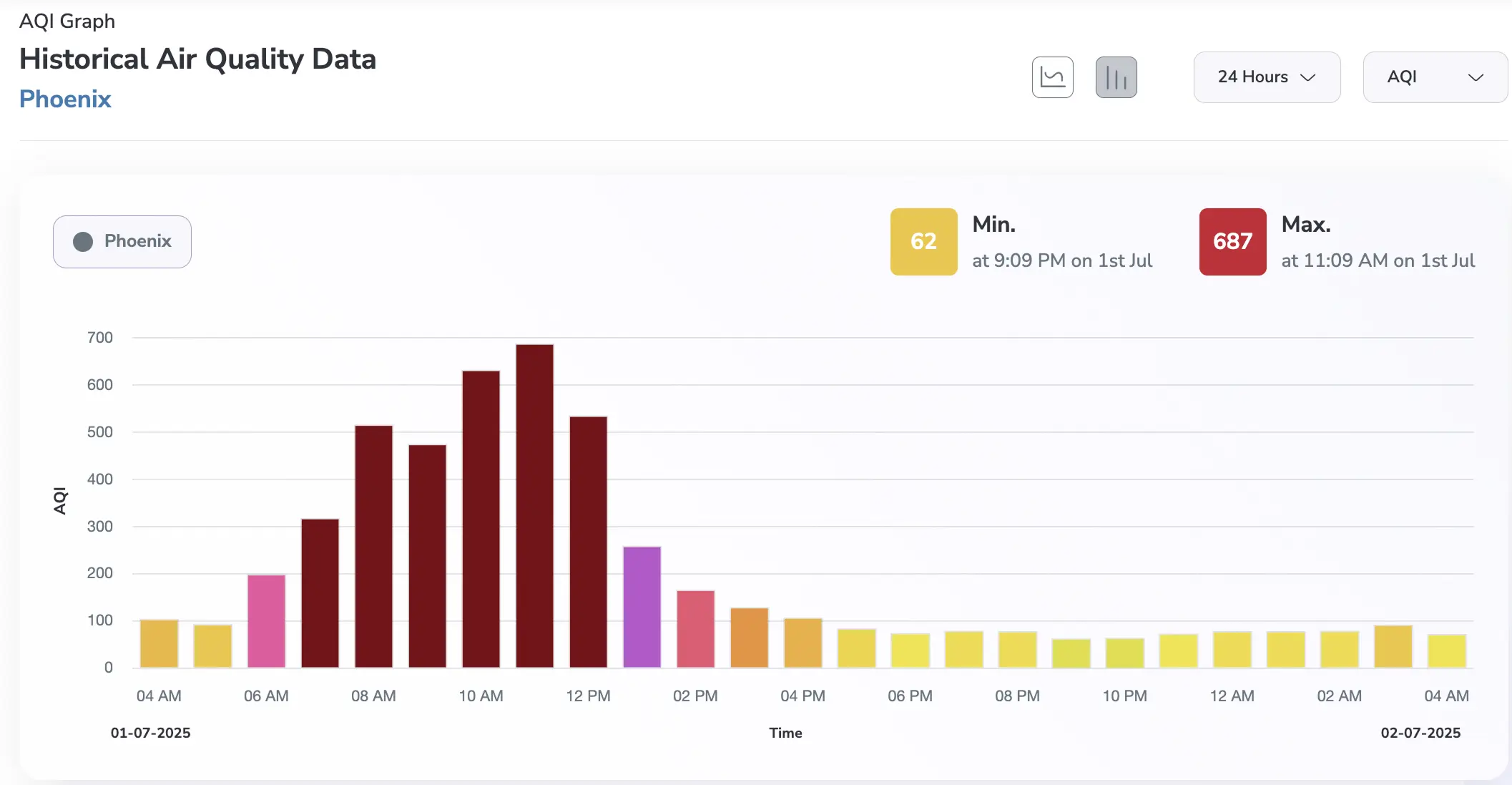
- AQI at 3:00 AM: 50 (Good)
- Peak AQI: 687 at 11:09 AM
- Change: Over 1,270% increase within 8 hours
The AQI remained healthy until early morning, but as wind activity increased, PM10 levels soared. The bar graph from AQI.in shows a sharp vertical wall after 6:00 AM, peaking at 11:00 AM and eventually tapering off in the late afternoon. A reading of 687 classifies the air as “Beyond Hazardous” — dangerous for every segment of the population, regardless of age or health condition.
Chandler, Arizona
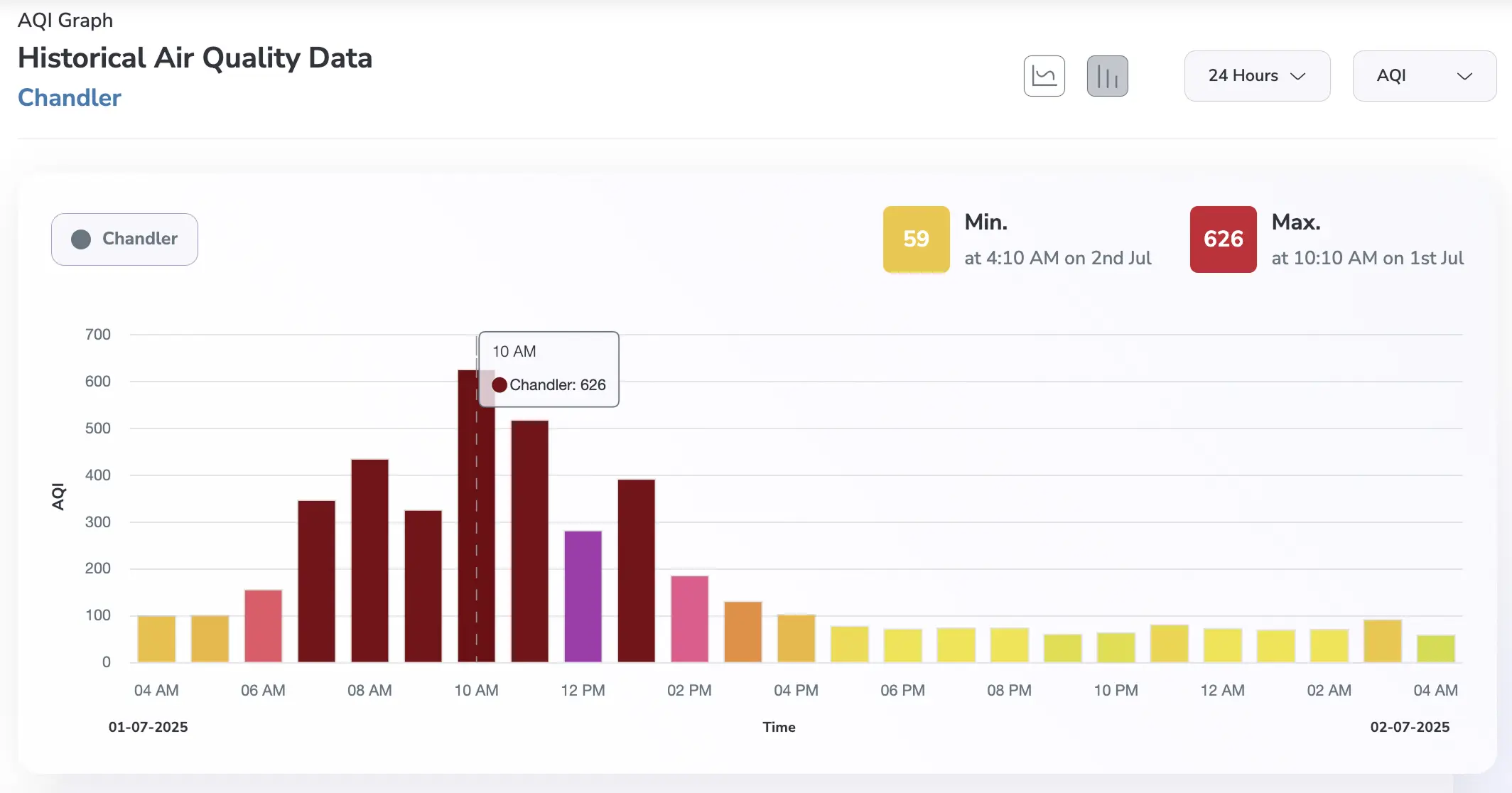
- AQI at 3:00 AM: 61 (Moderate)
- Peak AQI: 626 at 10:10 AM
- Change: 927% increase
Tempe, Arizona
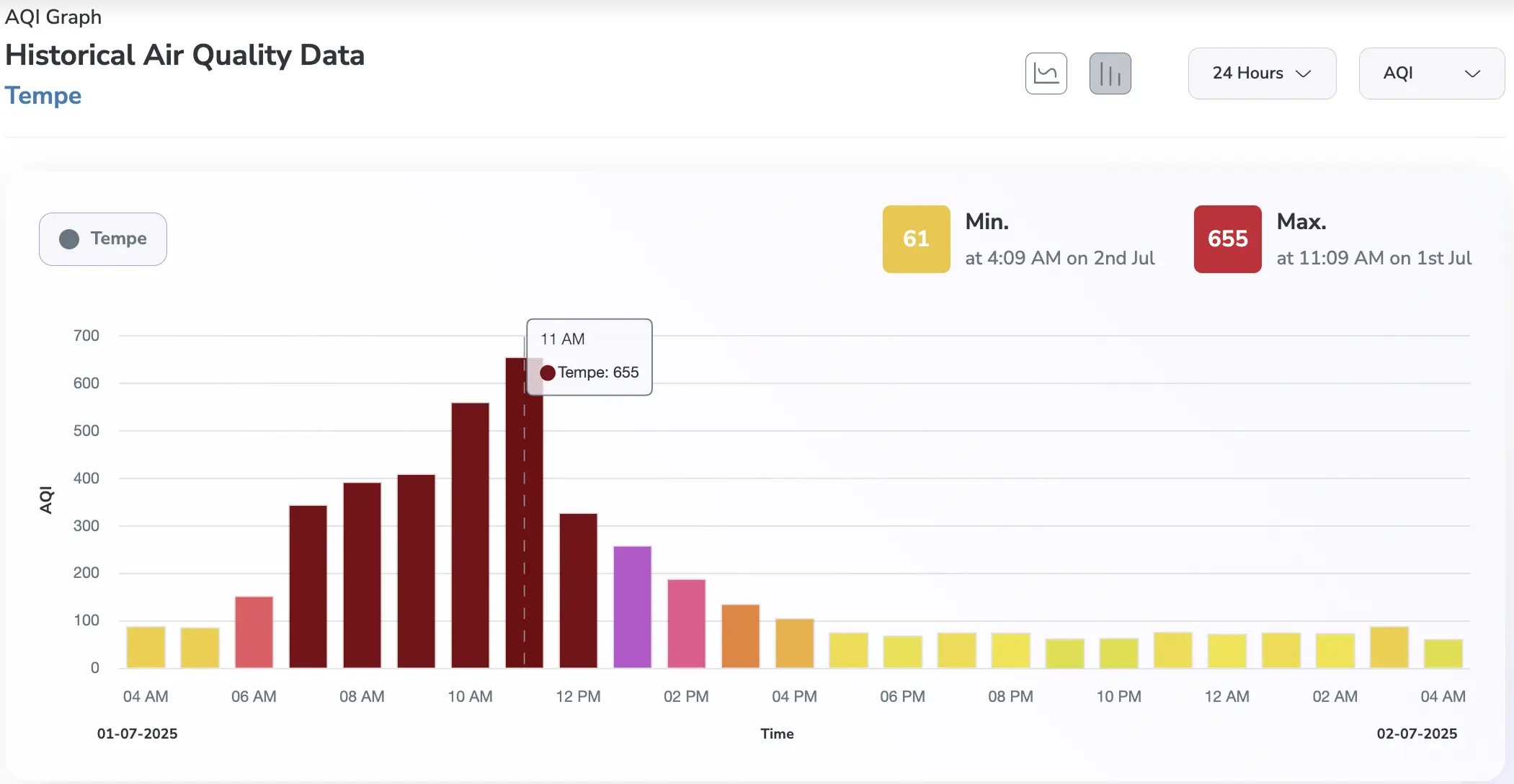
- AQI at 5:00 AM: 87 (Moderate)
- Peak AQI: 655 at 11:09 AM
- Change: 653% increase
Surprise, Arizona
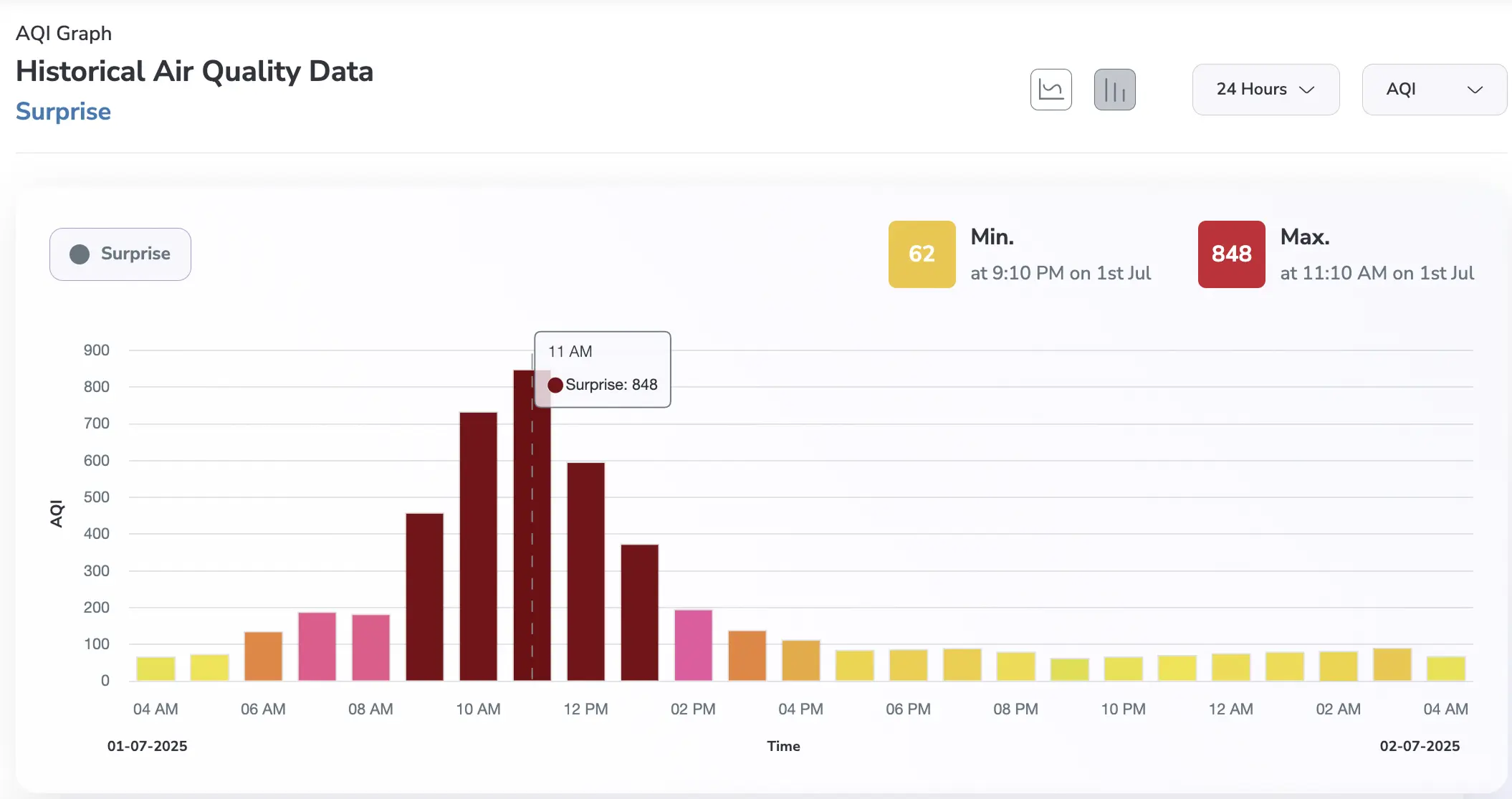
- AQI at 2:00 AM: 36 (Good)
- Peak AQI: 848 at 11:10 AM
- Change: Massive 2,256% increase in 9 hours
- The highest AQI recorded among all Arizona cities that day
Glendale, Arizona
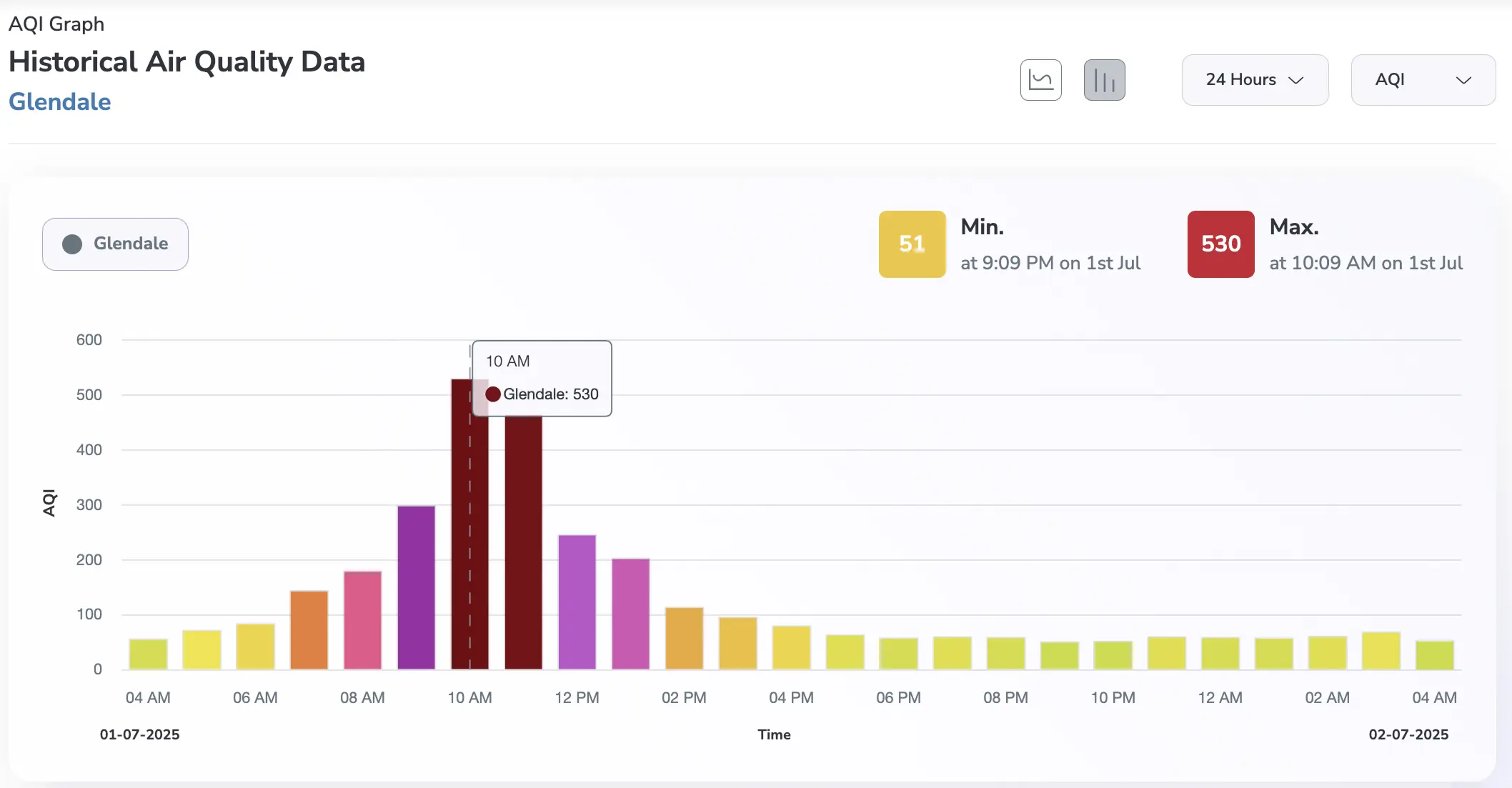
- AQI at 3:00 AM: 40 (Good)
- Peak AQI: 530 at 10:09 AM
- Change: 1,225% increase
Mesa, Arizona
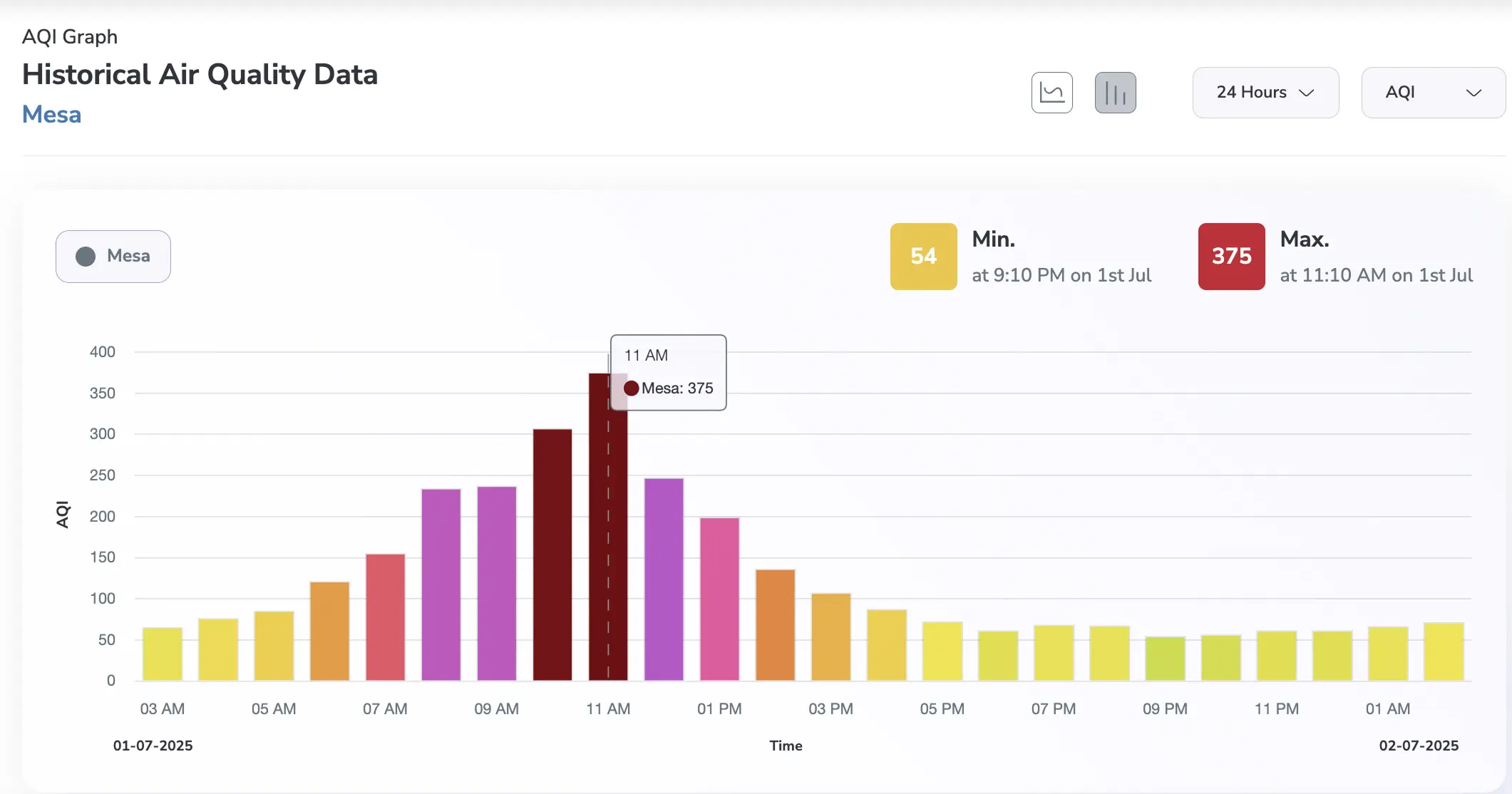
- AQI at 5:00 AM: 85 (Moderate)
- Peak AQI: 375 at 11:10 AM
- Change: 341% increase
Scottsdale, Arizona
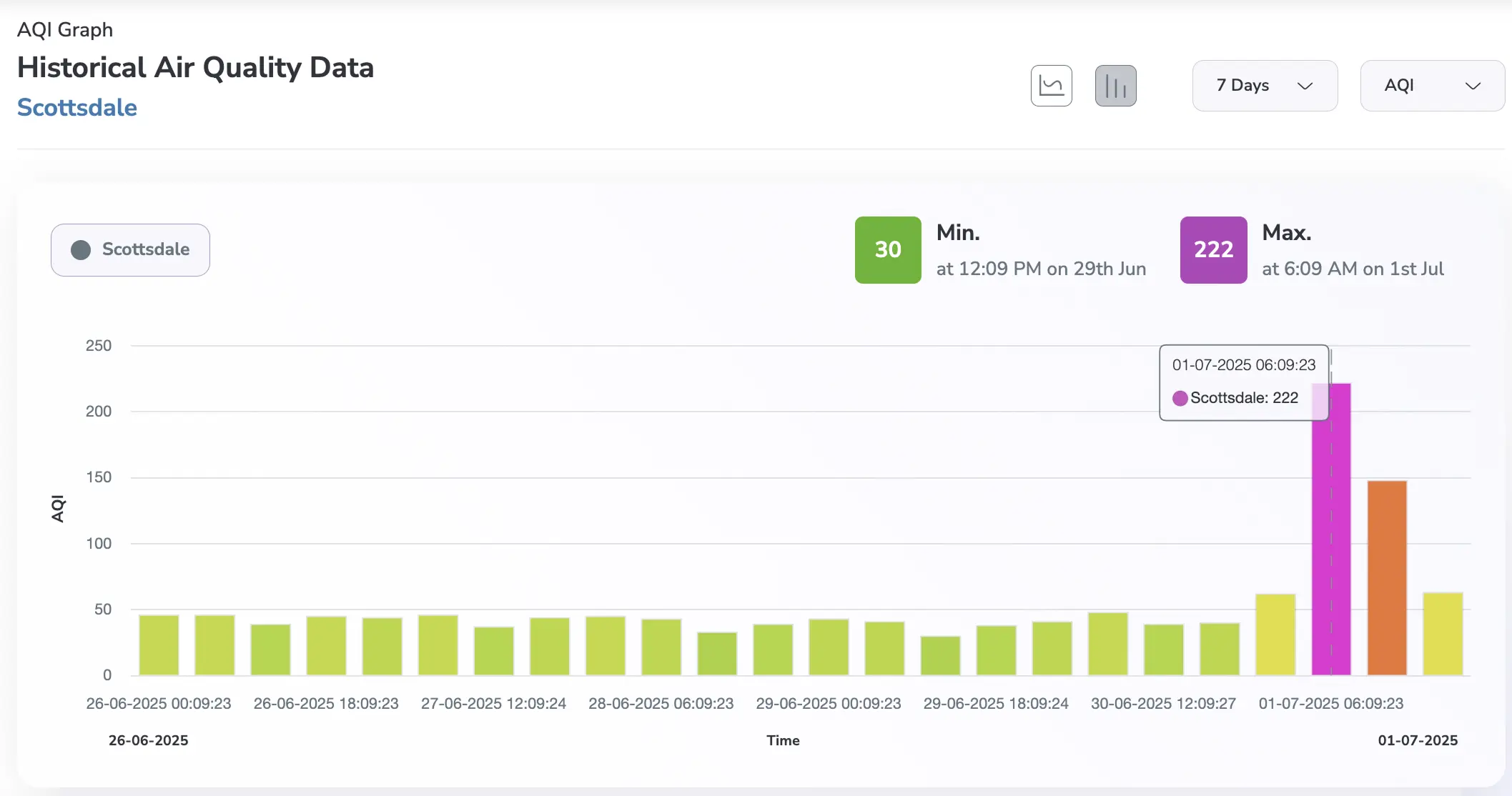
- AQI before July 1: 30 (Good)
- Peak AQI: 222 at 6:09 AM
- Change: Sudden early spike — among the first cities to witness the storm’s effects
PM10: The Dominant Pollutant in Desert Storm
In all reported cities, PM10 (particulate matter ≤10 microns) was the major pollutant in Arizona dust storm 2025. This isn’t surprising given Arizona’s dry desert climate and loose surface dust. During wind events, PM10 particles — mostly composed of sand, soil, and other coarse debris — get lifted into the air, reducing visibility and worsening respiratory health.
Unlike PM2.5, which infiltrates the bloodstream, PM10 causes acute short-term irritation in the eyes, throat, and lungs. At hazardous levels, however, even PM10 can trigger severe asthma, heart stress, and increased ER visits.
Timeline of Arizona Dust Storm 2025: The Morning Surge
The AQI graphs tell a consistent story across cities:
- Between 6:00 AM and 11:00 AM, AQI levels in all affected areas skyrocketed.
- By 10:00 AM, most cities had breached the 500+ threshold.
- The air stayed hazardous for several hours before settling to moderate/unhealthy levels in the evening.
Such sharp spikes are dangerous because they leave no room for warning, especially for people commuting, working outdoors, or exercising in the morning hours.
Why Real-Time AQI Monitoring Matters During Dust Storms?
This dust storm was a perfect example of why real-time air quality tracking is no longer optional. Phoenix, Tempe, and Chandler started the day with AQI levels that appeared safe. But within 4–6 hours, the same locations recorded some of the worst air in the world.
AQI.in’s live data helped visualize this abrupt shift, enabling residents to take precautions like:
- Avoiding outdoor activity
- Closing windows and using air purifiers
- Wearing N95 masks if stepping out
For sensitive groups — including children, the elderly, and those with respiratory illness — such early alerts can be life-saving.
Air Quality Wake-Up Call: The Arizona Dust Storm 2025
While Arizona often experiences dust storms, the July 1 event stood out for its scale, intensity, and rapid onset. It served as a wake-up call to how fast clean air can degrade and how natural events like dust storms are just as dangerous as man-made pollution.
With climate change projected to bring more extreme weather and drier soil, frequent dust storms could become the norm in the American Southwest.